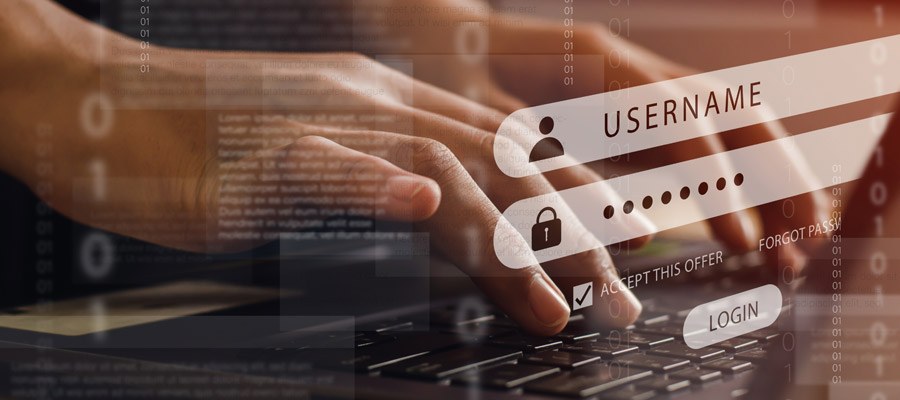
Cybercrime is expected to hit $8 trillion in 2023 and grow to $10.5 trillion by 2025 according to Cybersecurity Ventures. Small businesses are often the perfect victims, thanks to limited budgets and resources for cybersecurity. To stay secure, businesses need to continue shoring up their defenses beyond the basics. Many companies have spent the last several years adopting stronger authentication measures, from the encouragement of more complex passwords to multi-factor authentication and the use of passphrases. In this blog, we’ll break down what you need to know about passphrases vs. passwords and how they differ.
What’s the Difference Between Passphrases vs. Passwords
Traditional passwords are unique combinations of letters, numbers, symbols, and characters. A passphrase is a longer sequence of words that is much harder to crack. For example, a password might be “Dog123,” while a passphrase is “MyD0gL0vesT0Swim!”
But which is better for your business and users to adopt? Both passphrases and passwords can be secure if you have the right restrictions in place. But, if your users are making common password mistakes, like using the same password or making them personal, it can make them easier for criminals to guess. This is why there is a growing popularity in the passphrase. While they are easier for the user to remember, they can still be secure enough to protect system access.
Why You Should Use a Passphrase
Passphrases make all the difference. Passwords are often simple and short, with 50% of all passwords being six to eight characters. These passcodes are incredibly easy for hackers to crack. Passphrases are much more difficult to guess because they’re often much longer, but because they are memorable to the user, easy to remember and keep track of for authentication purposes.
Best Practices for Secure Authentication
Passphrases are just one piece of the security puzzle. There are multiple ways to ensure stronger authentication across all employees, software applications, and parts of your business. If you don’t already have multi-factor authentication, a password manager, a security training program, or a virtual private network (VPN), you should consider implementing them now. All three play a critical role in helping maintain the security of your systems.
Multi-Factor Authentication (MFA)
All employees should have multi-factor authentication (MFA) enabled. MFA helps provide an additional layer of security during the authentication process because it requires a secondary factor on top of a password or passphrase. This makes it more difficult to breach the system even if your login credentials are compromised.
Password Manager
Businesses should also consider providing a password manager to their employees. Since it is a best practice to not use the same password or passphrase for multiple systems, remembering the various login credentials can become daunting for users. A password manager is a software application that store passwords and passphrases in an encrypted database. This makes it easier for users to have multiple different passwords and passphrases because they only need to remember one – the password or passphrase for their password manager.
Employee Security Awareness Training
According to a joint study by Tessian and Stanford University Professor Jeff Hancock, 88% of security breaches are caused by human error. Implementing employee security awareness training is paramount. Training will help make your employees the first line of defense, teaching them to identify malicious emails or scams that could compromise their login credentials and provide unauthorized access to the corporate network.
Implement Virtual Private Networks (VPNs)
As many employees work from home or other locations, they might be accessing secure files, applications, and data from different networks. VPNs create a secure connection between a device and a network, keeping your employees secure from man-in-the-middle attacks or other types of hacking. Endpoint security also helps keep remote workers secure across their endpoint devices regardless of if they are on the corporate network or not.
Improve Your Security Posture
Whether using a password or a passphrase, secure authentication is only one piece of the cybersecurity puzzle. Working with a managed services provider to implement the right strategies and solutions that will work best for your business. If you feel overwhelmed at where to start, check out TPx’s Complete Guide to Cybersecurity. We’ll walk you through why cybersecurity is so critical for small businesses and why investment in it is paramount. If you’re ready to start, talk to one of our experts today.
